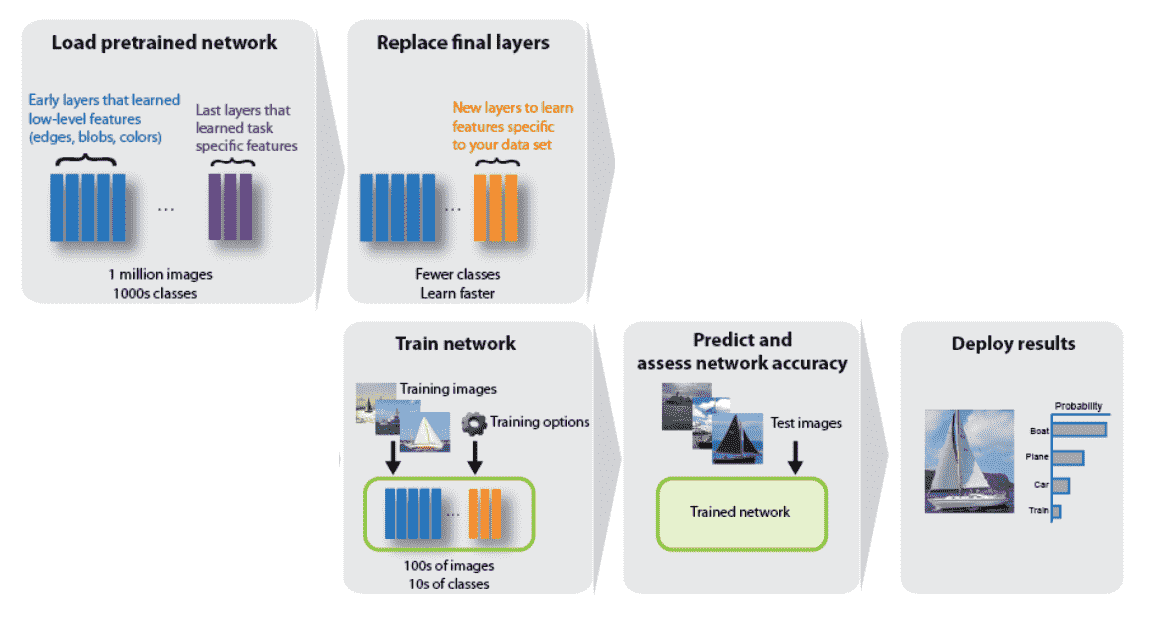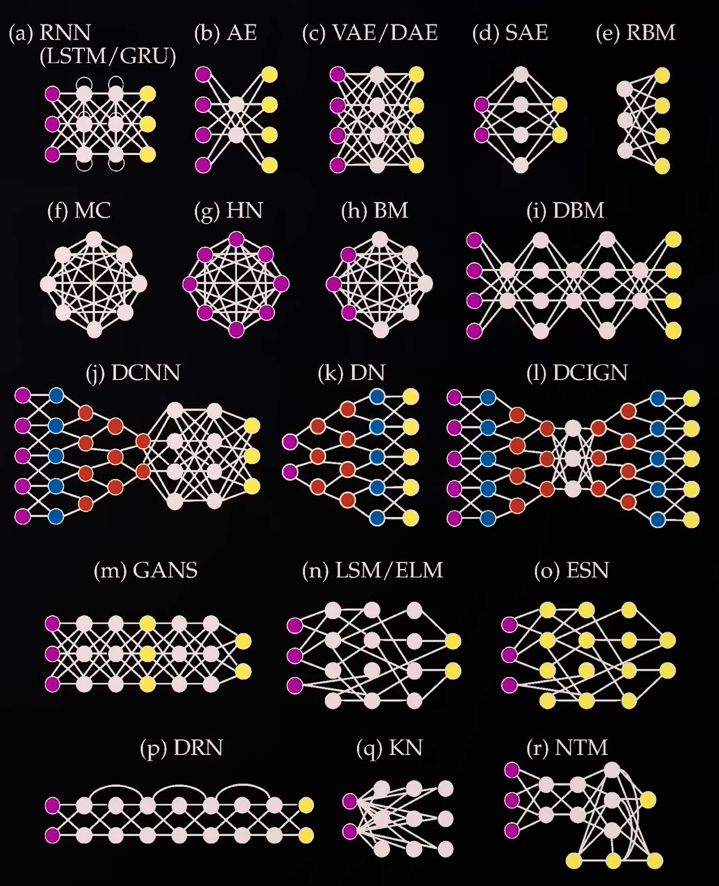01 Introduction
Deep Learning is subset of machine learning, which involves a deep neural network. Large availability of data in present-day has led to the rise in demand for deep learning applications.
Refer Machine Learning concepts, to understand this course well.
Types¶
flowchart TB
DL --> gm[Generative<br/>Models] & ha[Hybrid<br/>Architecture] & dm[Discriminative<br/>Models]
gm --> dbn[Deep<br/>Belief<br/>Networks] & da[Deep<br/>Autoencoder] & dbm[Deep<br/>Boltzmann<br/>Machine]
ha --> dnn[Deep<br/>Neural<br/>Networks]
dm --> cnn[Convolutional<br/>Neural<br/>Network] & dsn[Deep<br/>Stacking<br/>Networks]Applications of DL¶
- Object detection/counting
- Image/Video
- classification
- segmentation
- captioning
- sentence matching
- face recognition
- Natural language processing
- At the time of writing this sentence, ChatGPT’s successor GPT4 has come out, and it looks pretty insane
Advantages¶
- Automatic
- Robust
- Generalizable
- Parallelizable \(\implies\) Scalable
Disadvantages¶
- Low interpretability (Black box)
- Computationally-expensive wrt to Resource Constraints
Resource Constraints¶
- Processor Speed
- Memory Size
- Power Consumption
Challenges¶
- Lack of adequate data (addressed through Transfer Learning, Shallow learning, Incremental learning)
- Data inconsistencies
- Low battery life of edge devices (h/w controlling data flow at boundary b/w 2 networks)
- Resource-constrained algorithm development issues
- Diversity in computing units
- Privacy & security concerns (addressed through Encryption)
Image Representation¶
Every images is a matrix of pixels, where each pixel is represented as a combination of red, green, blue; usually as a 8-bit value (0-255)
So if the width and height of image are \(w, h\)
Key Metrics¶
- Accuracy
- Throughput
- Latency
- Energy efficiency
- Hardware costs
- Flexibility
Major Architectures¶
| Meaning | Efficient at | Major Application | Computation Complexity | |
|---|---|---|---|---|
| CNN (Convolutional) | Detecting spatial pattens | Images, Videos | High | |
| RNN (Recurrent) | Forward-feed, backward-feed, and self-loop is allowed | Time Series | ||
| ResNet (Residual Network) | Time Series | |||
| U-Net | Basis of diffusion models Segmentation Super-Resolution Diffusion Models | |||
| PINN (Physics-Informed) | ||||
| Lagrangian | ||||
| Deep Operator | ||||
| Fourier Neural Operator | ||||
| Graph Neural Networks |
Popular Models & Datasets¶
| Dataset | Sample Size | Content | Classes |
|---|---|---|---|
| MNIST | 50,000 | Images of handwritten digits (0-9) | 10 |
| CIFAR | 60,000 | Airplanes, cars, birds, cats, deer, dogs, frogs, horses, ships, and trucks | 10 |
Transfer Learning¶

IDK¶
